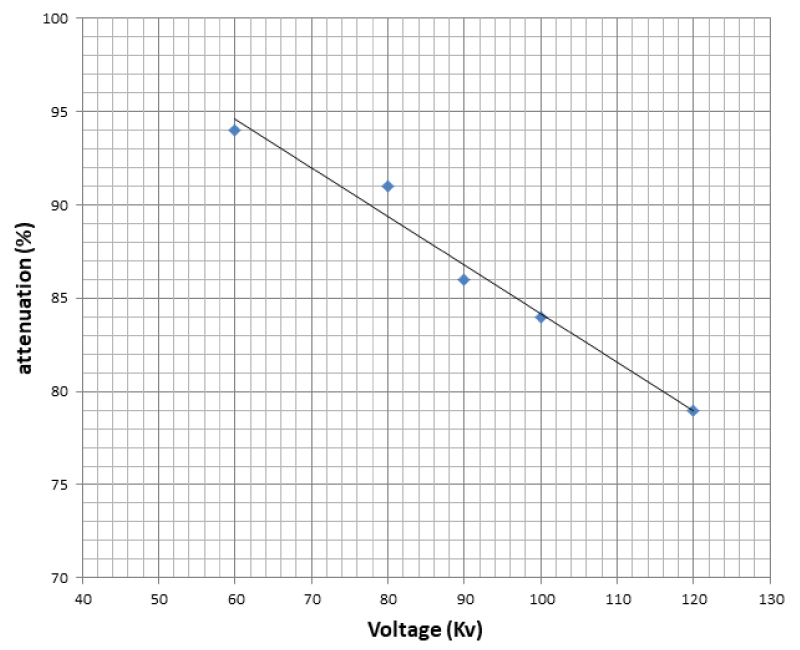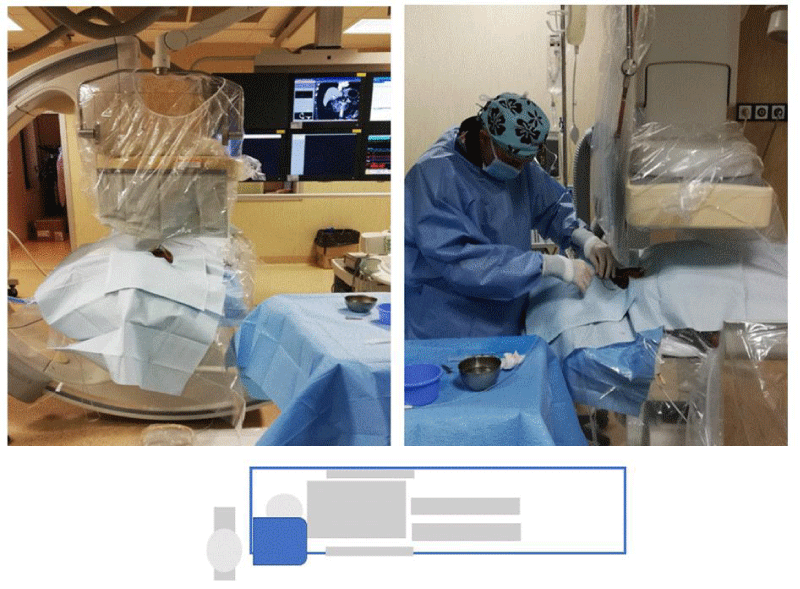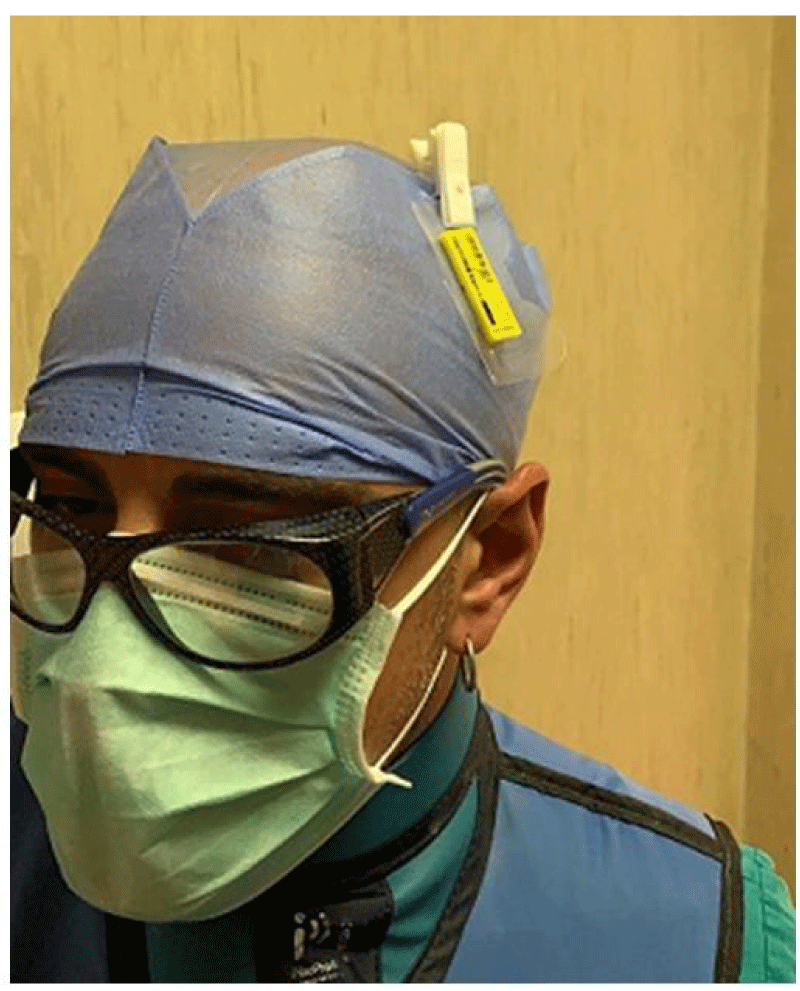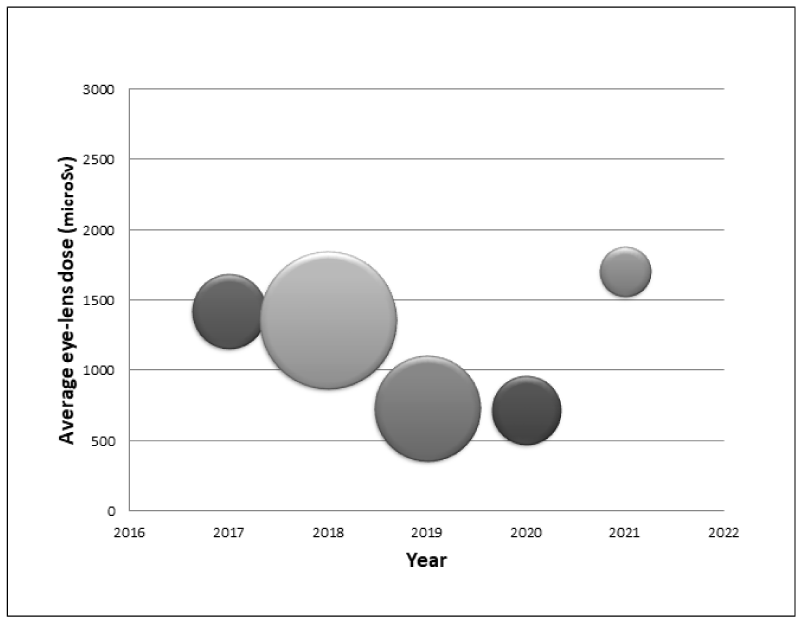Global Journal of Cancer Therapy
Investigation of the effectiveness of ECOLAB ’Drape ArmourTM’ Radiation Protection in limiting eye-lens doses of healthcare personnel exposed to ionizing radiation during gastroenterology - interventional radiology procedures
Fulvio IM Fucilli1*, Giuseppe Di Giovanni2, Alessandro Mastrorocco2, Matteo Ninni2, Piero Loprete2, Isa De Crudis2, Massimiliano Marano2, Antonio Santomauro2 and Fabio Fucilli2
2Radiology Unity, IRCCS “S. DeBellis”, Castellana Grotte, Italy
Cite this as
Fucilli FI, Giovanni GD, Mastrorocco A, Ninni M, Loprete P, et al. (2022) Investigation of the effectiveness of ECOLAB ’Drape ArmourTM’ Radiation Protection in limiting eye-lens doses of healthcare personnel exposed to ionizing radiation during gastroenterology - interventional radiology procedures. Glob J Cancer Ther 8(1): 046-050. DOI: 10.17352/2581-5407.000048Copyright License
© 2022 Fucilli FI, et al. This is an open-access article distributed under the terms of the Creative Commons Attribution License, which permits unrestricted use, distribution, and reproduction in any medium, provided the original author and source are credited.Objectives: To investigate the efficiency of the ECOLAB “Drape ArmourTM” device in limiting the eye-lens doses absorbed by healthcare personnel exposed to ionizing radiation, in a four-month trial during gastroenterology interventional radiology procedures.
Methods: Eyelens doses measured with eye-lens dosimeters calibrated in terms of equivalent dose at 3 mm depth ( Hp(3) ) were collected and analyzed since 2016 along with the irradiation parameters (Dose Area Product - DAP).
The eye-lens doses received during the four-month trial, have been compared with doses normally received, in the same conditions of irradiation, in the absence of the protection drape.
Results: During the period of use of Drape ArmourTM, the average dose to the eye lens was estimated to be 0.73 mSv (St.dev = 0.40 mSv). The average dose to the eye lens, measured in the same four-month period, across different years from 2017 to 2021, was equal to 1.30 mSv (st. dev = 0.35 mSv).
Conclusion: Results suggest the effectiveness of Drape ArmourTM in containing the doses to the eye lens.
Keypoint: Limiting eye-lens doses to a maximum value of 20 mSv/year is a real challenge, especially in interventional radiologic facilities. The use of suitable radio-opaque drapes may help healthcare workers involved in such facilities. The aim of the work is to evaluate the efficiency of the ECOLAB “Drape ArmourTM” sterile mono-use drape.
Abbreviations
St.Dev: Standard Deviation; DAP: Dose Area Product; I.R: Ionizing Radiation; ICRP: International Commission on Radiological Protection; IRCCS: Istituto di Ricovero e Cura a Carattere Scientifico (Institute for Treatment and Research); TNT: Tessuto Non Tessuto (Non woven fabric); PVC: Polimero del Cloruro di Polivinile (Polymer Vinyl Chloride); TIPS: Transjugular Intraheoatic Portosystemic Shunt; PPE: Personal Protective Equipment.
Introduction
Interventional radiology, by virtue of the minimum distance between operator and patient (source of I.R.) and the duration of the procedures, represents one of the most critical and complex scenarios from a radiation protection point of view.
Among the various criticalities that can be found, the limitation of the dose to the eye lens plays a role of primary importance.
The International Commission on Radiological Protection, (ICRP) is publication nr. 118 [1] confirmed that the lens of the eye is one of the most radiosensitive tissues in the body, reporting the probability of changes in the organ in a dose range between 0.2 and 0.5 Gy.
The Commission, therefore, recommends, in cases of planned exposure, adopting an equivalent dose limit of 20 mSv/year, as an average value over a five-year period, and a non-exceedable limit of 50 mSv in a single year.
The revision of the eye-lens dose limit was first proposed at the European level by Directive 2013/59 Euratom [2] and subsequently by Italy in Legislative Decree 101/2020 [3].
As of August 2020, therefore, it is mandatory to evaluate the dose to the eye lens to comply with the legal limits.
Since 2016 the Institute for Treatment and Research - IRCCS “S. De Bellis” of Castellana Grotte (Ba) provided eye-lens dosimeters, calibrated in Hp (3), to all of the radio-exposed health-care personnel likely to exceed the limit of 20 mSv/year. It is therefore possible to use the dosimetric data to evaluate the quality of the sterile-protective radio-opaque patient drapes as collective protection devices. The work intends to highlight the dosimetric advantages deriving from the use of the ECOLAB “ Drape ArmourTM “ drape as a Collective Protection Device for the eye lens. For a human being, exposure to ionizing radiation can lead to deterministic and stochastic effects. The former manifest themselves after an exposure threshold and are normally reversible at the end of the exposure. Radio-induced cataracts belong to this class of effects. Stochastic effects, on the other hand, do not have a threshold and are irreversible. Radio-induced tumors belong to this class of effects. Keeping the exposure of healthcare workers to ionizing radiation used in the workplace below certain dose limits is an obligation of the Employer.
Material and methods
In 2019 the ECOLAB company supplied its Drape ArmourTM drape to the Interventional Radiology Unit of the I.R.C.C.S. “S. De Bellis” in order to investigate the efficiency of the device in a four-month trial (May-August) during interventional radiology procedures.
The Drape ArmourTM is a free positioning “lead-free” protective sheet, made up of a mix of materials, that provides a shield of about 0,25 mm lead equivalence.
The external casing in non-woven fabric (TNT) with high absorbing capacity encloses the shielding material from ionizing radiation (antimony and PVC) capable of attenuating the scattered radiation and protecting the operator directly at the intervention site.
Figure 1 shows the attenuation trend of drape armor exposed to the primary beam [4], evaluated in the range of 60-120 Kvp.
The graph shows a high shielding capacity (about 90%) at the kVp of interest for interventional radiology (about 70-90 kVp).
Drapes were consistently used, in the period under review, during the interventional radiology procedures typical of the IRCCS.
Placement of the drape
The interventional procedures (position of every operator, the position of the X-ray source, per-cutaneous access ECC.) are standard.
In order to make the experimental set-up as similar as possible to the normal interventional set-up, it was decided to position the drape on the patient, according to the type of percutaneous access (Figures 2,3) exactly as if it were a normal sterile drape.
The patient, in “supine decubitus”, presents his arms adducted and resting on the appropriate supports.
The approach site is identified and disinfected, then the patient is covered with a sterile cloth equipped with a special adhesive hole.
The drape is positioned on the sterile drape, using special adhesive strips in order to obtain complete coverage of the body portion, leaving the access hole free.
The table is raised to the maximum necessary height and the flat panel of the image intensifier is positioned almost in contact with the patient.
The anti-X bulkhead, covered by a sterile cap, is positioned to protect the first operator.
Placement of the drape in the percutaneous biliary drainage procedure
The anti-X sheet is positioned to cover the thorax-right flank region in a transverse position with respect to the length of the patient.
Placement of the drape in the TIPS (transjugular intrahepatic portosystemic shunt) procedure
The anti-X drape is positioned to cover the right cervical region parallel to the patient’s length, partially covering the patient’s head.
Positioning the dosimeter
To the operators of the interventional radiology department of the I.R.C.C.S «De Bellis» have been prescribed the use of the following personal dosimeters, on a monthly basis:
- Film badge dosimeter, calibrated in Hp(10) and Hp(0.07), to be worn under the leaded gown at chest height;
- Cuff dosimeter, calibrated in Hp(0.07), worn on the limb closest to the exposure source.
- Dosimeter dedicated to the eye lens, calibrated in Hp(3), to be worn hooked to the surgical cap or mounted on the temple of the X-ray goggles on the side of the head which is usually facing the X-ray beam during the procedures;
for the latter dosimeter, there is a measurement uncertainty, as a function of the detected dose, equal to about 20% corresponding to the value of 1 mSv.
All dosimeters were supplied by the TECNORAD company based in Verona (Italy). Film Badge Dosimeters (calibrated in Hp(10) and Hp(0,07) ) use a photographic film. Dosimeters calibrated in Hp(0.07) and Hp(3) use thermoluminescent crystals (TLD) with Lithium Fluoride (LiF: MCP GR200-A).
Figure 4 shows the position of the eye-lens dosimeter.
Results and discussion
The average dose to the eye lens of the first operator, measured from May to August 2019, and average doses measured, in the same four-month period, in the years 2017-2018-2020 and 2021 were analyzed in relationship to the average Dose Area Product (DAP) values referring to the months above mentioned (Tables 1a,b).
The average eyelens dose values are reported, as a function of the years, in the “bubbles graph” of Figure 5 (the DAP values define the diameters of the bubbles).
The graph shows the effect of Ecolab Drape ArmourTM on the average value of the eyelens dosimetry referred to the four-month period May-August of the year 2019 (about 0.750 mSv) for which a DAP value (2685 Gy*cm2) was recorded lower only than the one relating to the year 2018.
Figure 6 shows the trend of the monthly dose (in micro Sv) to the eye lens as a function of the total DAP for the entire year 2019 (case “a”), the monthly dose to the lens according to the DAP for the months of 2019 in which the Ecolab Drape ArmourTM was not used (case “b”) and the monthly dose to the eye-lens according to the DAP for the four-month period May-August 2019 (case “c”) with an indication of the standard error.
The trend line has an angular coefficient respectively of 0.45 +/- 0.05 mSv/Gycm2 (case “a”); of 0.50 +/- 0.05 mSv/Gycm2 (case “b”) and 0.23 +/- 0.07 mSv/Gycm2 (case “c”).
The estimate of the dose to the eye lens derives from the result of measurements affected by uncertainties, the sum of which defines the experimental error to be associated with the measurement itself [5]. In assessing the dose, the uncertainty derived by the measurement line, which generally varies between 20% and 50% [6], and by the behavior of the operators (position with respect to the patient, use of PPE, repeatability of the dosimeter position).
It is known that the radiation field diffused by the patient has an asymmetrical spatial distribution. Furthermore, the position of the operators, in particular the first operator, depends on the interventional procedure, which, in some way, also defines the DAP values delivered. In the literature, it is reported the difficulty in correlating the DAP to the dose absorbed by the lens is evidently “position-dependent” [7]. To minimize measurement uncertainties, the operators involved were asked to standardize their reciprocal positions with respect to the patient’s table, according to the procedures to be performed. Furthermore, attention was paid to the repeatability of the positioning of the dosimeter to the lens.
Collected data highlight the effectiveness of ECOLAB Drape ArmourTM in limiting the dose absorbed by the lens during interventional radiology procedures. In fact, during the period of use (May-August 2019) although the exposure load, evaluated through the DAP, is comparable to that of the same period of the year 2018, the average dose absorbed by the lens is less than 1 mSv/month. A similar value can only be found in the year 2020 during which the average value of the DAP is 65% lower than the average DAP in 2019.
Conclusion
A radio-induced cataract is a well-known deterministic effect with a threshold value of 500 mSv. With the aim of preventing such deterministic effects in operators exposed to ionizing radiation, the Council Directive 2013/59 / EURATOM has lowered the lens dose limit to 20 mSv/year (about 1.5 mSv/month). The use of Ecolab Drape ArmorTM during interventional procedures allows keeping the lens dose below the value of 1.5 mSv/month allowing compliance with the limit of 20 mSv/year.
Authors express their sincere thanks to ECOLAB S.r.L. for the free supply of the « Drape ArmourTM « during the entire trial period.
- ICRP 118. Statement on Tissue Reactions and Early and Late Effects of Radiation in Normal Tissues and Organs-Threshold Doses for tissue reactions in a Radiation Protection context.
- European Commission, European Council Directive 2013/59 on basic safety standards for protection against the dangers arising from exposure to ionizing radiation and repealing Directives 89/618/Euratom, 90/641/ Euratom, 96/29/Euratom, 97/47/Euratom and 2003/122/Euratom, O. J. of the EU. L13, 57: 1-73, 2014.
- Legislative Decree 31 July 2020, no.101 "Implementation of Directive 2013/59 / Euratom, which establishes basic safety standards relating to protection against the dangers deriving from exposure to ionizing radiation, and which repeals Directives 89/618 / Euratom, 90/641/Euratom, 96/29/Euratom, 97/43/Euratom and 2003/122 / Euratom and reorganization of the sector legislation in implementation of article 20, paragraph 1, letter a), of the law of 4 October 2019 , no. 117. "
- Web Site ECOLAB “Drape Armour attenuation data”.
- Laitano RF. Fondamenti di dosimetria delle radiazioni ionizzanti 4a edizione, ENEA. 2015.
- Istituto Superiore di Sanità, Istisan Reports 15-41 - Study Group for Quality Assurance in Interventional Radiology (2015) Operational guidelines for the optimization of radiation protection in interventional radiology procedures.
- Pugliese MG. The problem of the dose to the lens in the light of the new European legislation. Physics in Medicine Supplement I. 2018.

Article Alerts
Subscribe to our articles alerts and stay tuned.
 This work is licensed under a Creative Commons Attribution 4.0 International License.
This work is licensed under a Creative Commons Attribution 4.0 International License.







 Save to Mendeley
Save to Mendeley
